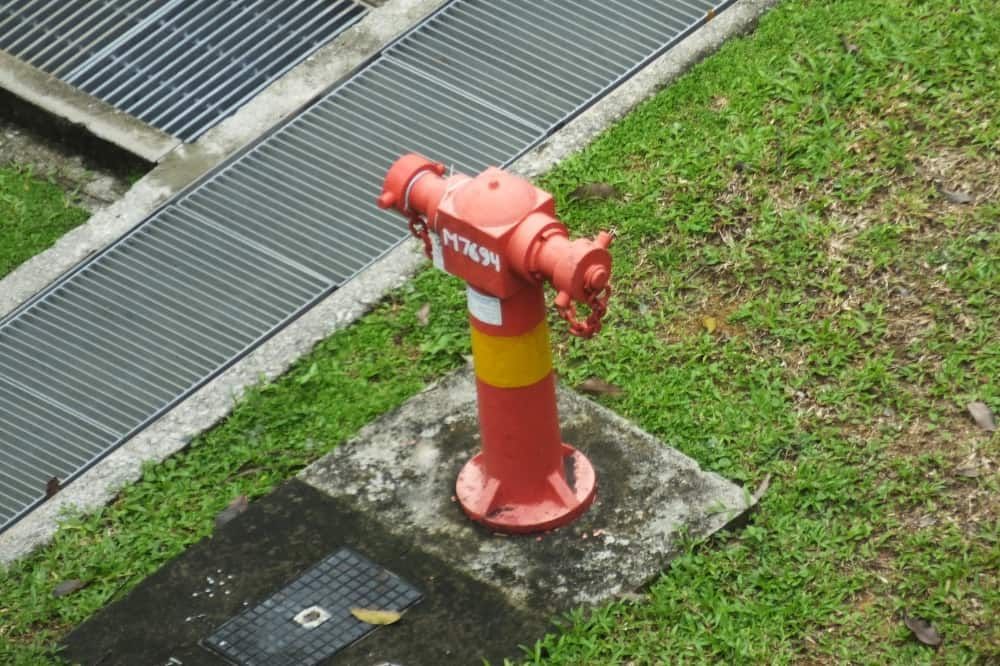
Are Novec 1230 and Fluid FK 5-1-12 the Same Extinguishing Agent?
Choosing the correct extinguishing method for your surroundings can be a daunting task for residential and domestic properties when it comes to protecting your team members, family, and friends in the event of a fire.
Lately, there has been a lot of concern and questions about the effectiveness, safety, and similarities between clean agents, and we feel as though it needs to be cleared up so you can make informed decisions for your building when implementing a fire protection system.
That’s why, in this blog, we are delving into the characteristics, advantages, and considerations of both and uncovering the truth about whether Novec 1230 and Fluid FK5112 are the same extinguishing agent, so you don’t have to worry about choosing one or the other.
What is an Extinguishing Agent?
Regarding what an extinguishing agent is, they are substances or mixtures stored within a fire suppression system used to control, manage, and extinguish fires. They can all be stored in the form of a gas, liquid, or solid, designed to remove one or more elements of the fire triangle, such as heat, oxygen, or fuel.
Without this fire protection fluid, a fire would have no boundaries and could spread as far as it could reach, meaning the installation of fire protection products and services should not go unnoticed by companies and homes trying to implement optimal health and safety procedures.
Extinguishing agents nowadays are found more commonly in an automatic fire suppression system, which can detect and suppress a fire before you know it. Compared to traditional fire extinguishers or dialling the number for a fire engine, a fire can be suppressed within a matter of moments without any potential life-threatening risks.
Different Types of Extiniguing Agents
Although you know what extinguishing agents are there to do in terms of detection and suppression, it is worth noting the different types of extinguishing agents.
If you look closer at the ingredients used to extinguish a fire with an automatic fire suppression system, it is often a toss-up between water, foam, dry chemical powders, carbon dioxide (CO2), halon, and clean agent alternatives—depending on what your preferences and building are suited for. Let’s take a look at them all in detail and define their strengths and weaknesses.
- Water: This will remove the heat element, cooling the fire by smothering the flames
- CO2: This gaseous extinguishing agent displaces oxygen, suffocating the fire
- Foam: The foam agent creates a blanket that separates the fuel from the oxygen, smothering the fire
- Wet Chemical: This will cool the fire and create a foam layer to prevent re-ignition of the flame
- Clean Agents: These environmentally-friendly agents will displace oxygen concentrations to suppress the fire without leaving any residue
- Dry Powder: This powder essentially interrupts the chemical response of the fire, forming a border between fuel and oxygen
- Halon: Similar to clean agents, they remove heat from the fire and do not leave residue in the aftermath of a fire
- Dry Chemical Powders: If you use a dry chemical powder, this will interrupt the chemical reaction of the fire and prevent the release of flammable vapours.
Now that you understand the core practices of what each mixture and substance can achieve within fire suppression, although they all have unique properties, it is important to note that not every total flooding fire detection system can perform within your building.
This is why a fire assessment and requirements are checked before installation, as you want to make sure that the fire suppression system that is installed will do the most effective job.
FK5112 vs Novec 1230: Are They the Same?
In regards to whether FK5112 vs Novec 1230 are the same extinguishing fluid, in short, they are the same. Although there is some confusion about branding, Novec 1230 is just the trade name of the extinguishing agent, FK 5-1-12.
This means that together, they’re both clean-agent fire suppression fluids looking to protect facilities all over the world with their unique extinguishing processes. As we noted above, a clean agent fluid works by reducing the oxygen level of the fire while leaving no lasting damage to all of your sensitive equipment or building properties in the aftermath.
When the automatic detection system is triggered by the heat of the flames, the Novec 1230 fire protection fluid (also known as FK 5-1-12) in the fire suppression system is designed to quickly discharge and reach the right amount needed to put out the fire within 10 seconds. This is much faster than inert gases, which usually take 60 to 120 seconds to even get close to the job of 3M Novec 1230 fluid.
Benefits of Novec 1230 (Fluid FK 5-1-12) Clean Agents
Each design for your fire suppression system will be unique, but the performance of the clean agent fire suppression fluid will be the same regardless of whether it is installed correctly and within the vicinity of potential fire hazards. Here are some of the benefits of FK 5-1-12 that you will notice if you’re ever in danger of a fire outbreak:
1: Extremely Low Environmental Impact
As you search the market for other fire suppression methods, it is clear that clean agent systems win in terms of leaving no environmental damage. They have low ozone depletion potential (ODP) and low global warming potential (GWP), helping keep our planet clean from any harmful chemicals.
2: Quick Response Discharge
As stated above, Novec 1230 (FK 5-1-12) only needs 10 seconds to reach and suppress the fire if installed in the optimal place within your building. This fluid could be the difference between someone’s life being saved or not, so enforcing it may be something you want to consider.
3: Flexible Applications
Although certain fire suppression systems can only be useful within certain applications, this fluid is extremely versatile in the areas where it can be efficient, such as server room fires,
kitchen fires, museums, control rooms, etc.
4: Safe For People
When discharged, some gaseous or chemical-based fluids can be extremely harmful for human consumption, whether that be suffocation or long-term health risks. However, with this clean agent, they are non-toxic and have a low atmospheric lifetime—meaning that they have no effects on your health and won’t be in the air for long anyway.
5: Precise Suppression
Clean agent fire suppression systems are known for having excellent suppression rates, maximum coverage, and no aftermath cleanup; thus, your business won’t be out of action for long at all.
If you want to receive all the benefits that a clean agent fire suppression system brings to the table, reach out to our qualified experts today to see if you’re the right fit for immediate installation—contact us today!


